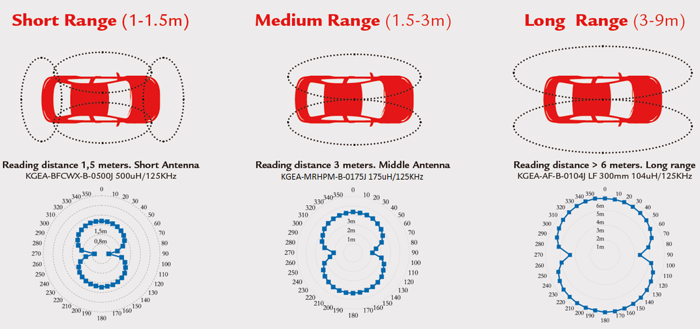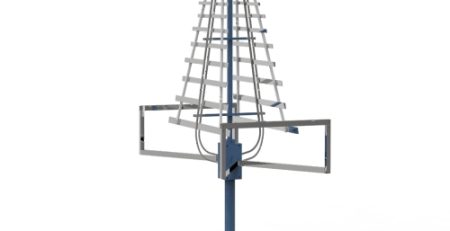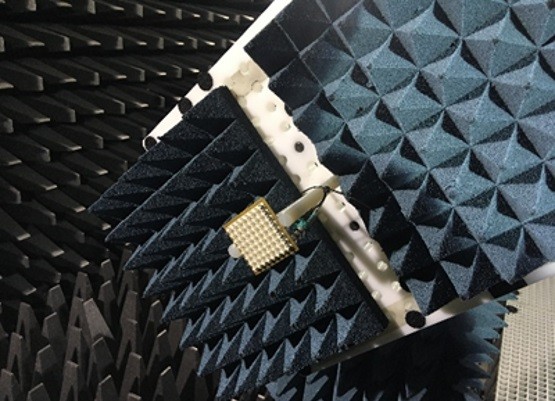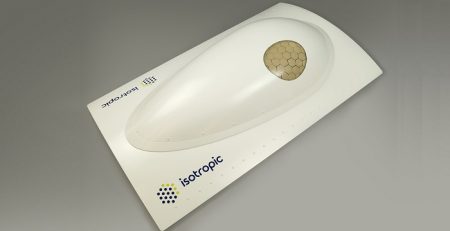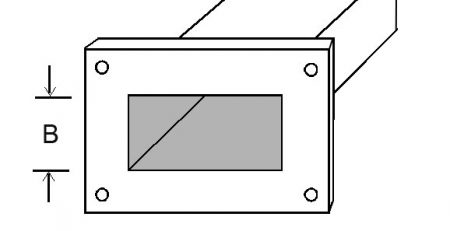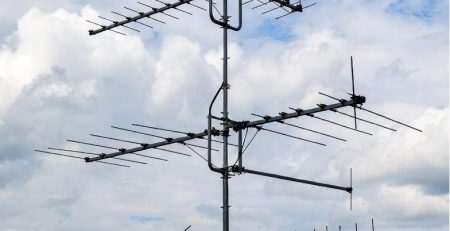How to Choose the Most Appropriate RF Antenna for 5G Base Stations: A Buyer’s Guide
 I. What are 5G Antenna Requirements
I. What are 5G Antenna Requirements
A. Bandwidth and Critical Frequency Bands
5G employs a wide band, ranging from sub-6 GHz to millimeter-wave (mmWave) bands. This requires antennas that accommodate wide frequency bands with consistent performance. RFecho can provide antennas that meet such high bandwidth requirements. Our Wideband Horn Antennas and Multi-Octave Horn Antennas are examples of solutions designed for broad frequency range coverage. Similarly, RFecho’s Log Periodic Antennas are renowned for offering a broad frequency range, making them highly versatile for 5G applications across various bands.
B. Gain, Beamforming, and MIMO Impact
Antenna gain is a fundamental parameter that refers to how effectively an antenna can convert input power into radio waves in a specific direction. More gain can yield more powerful signals and extended coverage. In 5G, technologies like Multiple-Input Multiple-Output (MIMO) and beamforming play the most significant role in pushing capacity and spectral efficiency. Multiple antennas at both receiver and transmitter ends use MIMO to transmit and receive multiple parallel streams of data. Antennas to support MIMO must enable multiple polarizations in most instances. RFecho’s Dual Polarized Horn Antennas, with 13 products in this category, are specially designed to enable these important MIMO features in the optimal manner, offering excellent performance in the new 5G deployments.
C. Best Signal Performance through Polarization
Polarization refers to the direction of the electric field of the radio wave. Polarization management in 5G must be tightly controlled to minimize interference, improve signal quality, and enable features like MIMO. RFecho’s RF horn antennas, its line of flagship products, are linearly polarized, the standard and cost-effective solution for most base station deployments, and optimized for reliable transmission and reception of the signal.
D. Power Handling and Impedance Standards
Base stations typically operate with high power levels, so antennas must withstand the power that is transmitted without degrading. Additionally, maintaining a constant impedance of usually 50 ohms is imperative for efficient power transfer from the transmitter to the antenna in order to minimize reflections and ensure maximum system performance. At RFecho, our horn antennas are designed to a standard impedance of 50 ohms so that they can seamlessly integrate into common RF systems.
- RFecho RF Antenna Products for 5G
A. RFecho Horn Antennas: High Performance
RFecho has extensive experience in producing only the finest quality RF Horn antennas, noted for their high gain, directivity, and broad frequency capabilities.
- 1. Wideband and Multi-Octave Horns
- 2. Dual Polarized Horns for MIMO
- 3. Standard Gain and Conical Horns
 B.RFecho Biconical Antennas: Multifaceted Use
B.RFecho Biconical Antennas: Multifaceted Use
RFecho’s Biconical Antennas are highly adaptable, often used for wide-band measurements and certain communication connections. With 48 products, they have variations in gain and frequency specifications. For example, some offer gains ranging from -26 dBi to 1 dBi across 20 MHz to 1000 MHz, while others range up to -45 dBi to 1 dBi Gain over 20 MHz to 3000 MHz, showcasing their adaptability for various 5G testing and deployment scenarios.
C. RFecho Antennas for Specialized Requirements
Aside from these general categories, RFecho’s extensive set of antennas caters to even more specialized requirements:
- 1. Cavity Backed Spiral Antennas
- 2. Luneburg Lens and Probe Antenna
- 3. Dipole Antennas
 III. Choosing the Best RFecho Antenna
III. Choosing the Best RFecho Antenna
A. Choosing the Antenna Type to Suit 5G Scenarios
Consider each 5G deployment scenario. For dense urban areas of high capacity, Polarized Horn Antennas could be most critical for MIMO use. For broader coverage or test scenarios across various 5G bands, the wideband properties of Log Periodic Antennas or Wideband Horn Antennas would be highly valuable. RFecho’s varied product line guarantees there is an antenna solution for just about any application, from Hand-held Log-periodic Antennas for field measurements to Standard Gain Horn Antennas for lab measurements.
B. Determining Gain, Frequency, Polarization
Three parameters are non-compromisable when choosing an antenna. Based on link budget calculations for your coverage area, decide on the required gain. Ensure the operating frequency range of the antenna completely covers your target 5G bands. Finally, select the needed polarization – RFecho horn antennas are linearly polarized, while MIMO offers dual-polarized options. Reviewing all the specifications of each RFecho product, such as the Biconical Antenna with -45 dBi to 1 dBi gain and 20 MHz to 3000 MHz frequency range, guarantees ideal matching.
C. Material and Impedance: RFecho’s Standards
The physical construction of the antenna will establish its performance and durability. RFecho’s RF horn antennas use high-grade Aluminum (Al) or Copper (Cu) materials, chosen for their high electrical conductivity and superior mechanical strength, offering long-term reliability in even the harshest environments. The use of the standard 50 ohms impedance consistently for our horn antenna series also renders system integration a simple process and minimizes power loss, an important factor to ensure effective 5G base station operation.
D. Leveraging RFecho Custom Solutions
Every 5G rollout will offer specific challenges and special requirements that stock solutions cannot always meet. RFecho is attuned to this need for flexibility. We specialize in designing the best quality RF Horn antennas for any conceivable application, and our antennas are tailored to the client’s specifications. This client-centric approach is transferred to the rendering of Custom Solutions. If your 5G base station project requires a custom antenna design or special adaptations, RFecho can offer customized solutions that exactly meet your specific specifications for optimal performance for your custom needs.
IV. Why RFecho for 5G Antennas
At the very heart of RFecho’s product range is a relentless dedication to quality. Our antennas are meticulously designed and constructed, a reflection of our expertise and meticulous detail-based strategy. That degree of accuracy ensures every single RFecho RF antenna, from Standard Gain Horn Antennas to bespoke Dual Polarized Horn Antennas, delivers reliable, consistent, and high-caliber performance, the kind required in 5G base station mission-critical applications. We’re proud to supply the best antenna solutions.
Choosing RFecho is all about gaining a partner dedicated to your success. We offer full support, including direct contact facilities, and a Quotation List for easy procurement. Our specialists are on hand to assist you through our extensive range of products and to identify the ideal RFecho RF antenna that suits your 5G base station deployment. We understand the problems involved with the integration of antennas and are here to provide the knowledge and assistance you need to deploy successfully.
FAQ
Q1: What frequency band is best for 5G base station antennas?
A: That will be based on your network needs. Sub-6 GHz frequencies offer higher coverage, and mmWave (24–40 GHz) offers ultra-high speed with limited range. RFecho offers each.
Q2: How do I decide what gain to use on my RF antenna?
A: Higher gain offers more long-range coverage at the expense of beamwidth. For high-density urban areas, moderate gain with larger coverage is generally best.
Q3: Can one antenna support more than one 5G band?
A: Yes. The majority of RFecho antennas are multi-band, with minimal requirements to install multiple antennas.
Q4: How important is weatherproofing for outdoor 5G antennas installed?
A: Extremely important. Outdoor antennas require rain, wind, and temperature resistance. RFecho antennas are at least IP65 protection rated.
Q5: What is the typical lifespan of a 5G RF antenna?
A: Proper installation and care allow a good RFecho antenna to endure over 10 years with minimal performance loss.


 I. What are 5G Antenna Requirements
I. What are 5G Antenna Requirements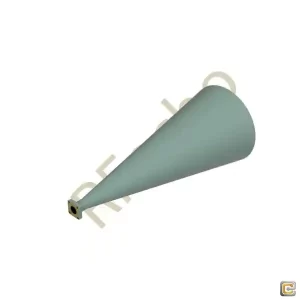 B.RFecho Biconical Antennas: Multifaceted Use
B.RFecho Biconical Antennas: Multifaceted Use III. Choosing the Best RFecho Antenna
III. Choosing the Best RFecho Antenna